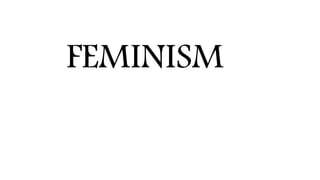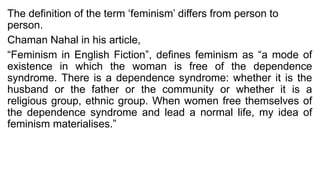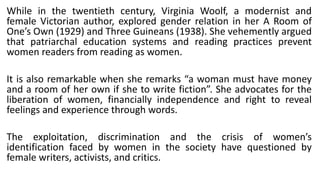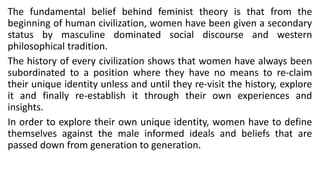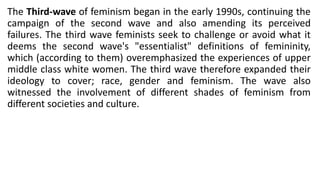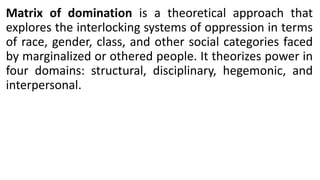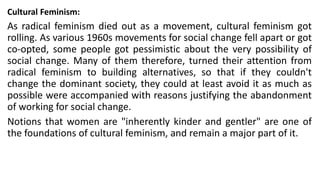This document discusses feminism and its history and types. It defines feminism as advocating for political, economic, and social equality between women and men. It outlines the three waves of feminism, focusing on increasing rights and addressing discrimination. It also describes several types of feminism, including liberal feminism working within existing systems, radical feminism advocating a reconstruction of society, cultural feminism building alternatives, Marxist feminism seeing capitalism as the root cause, and ecofeminism linking oppression of women and the environment.
